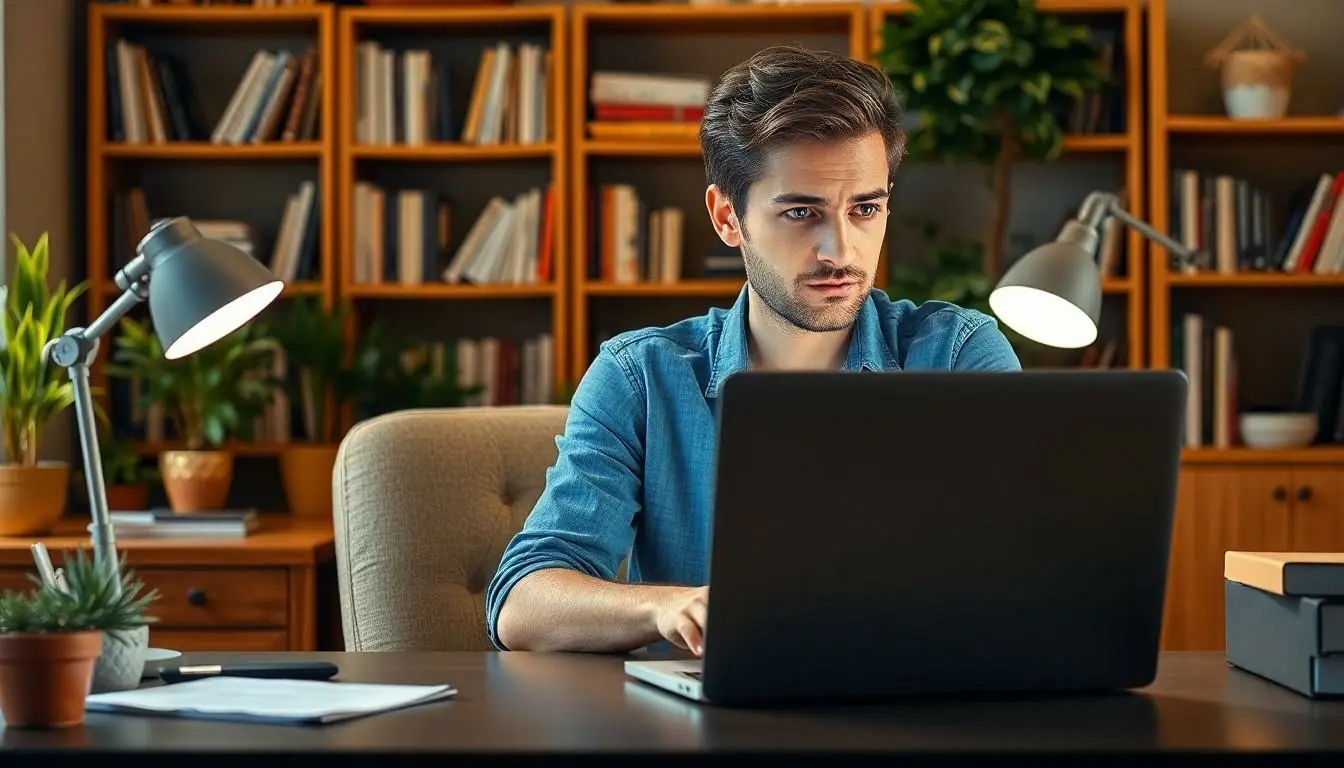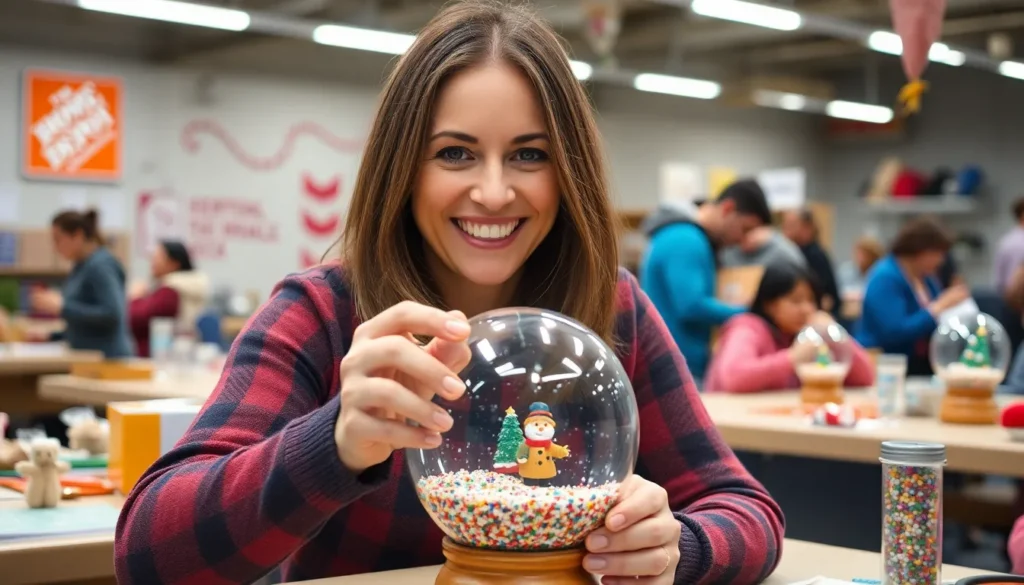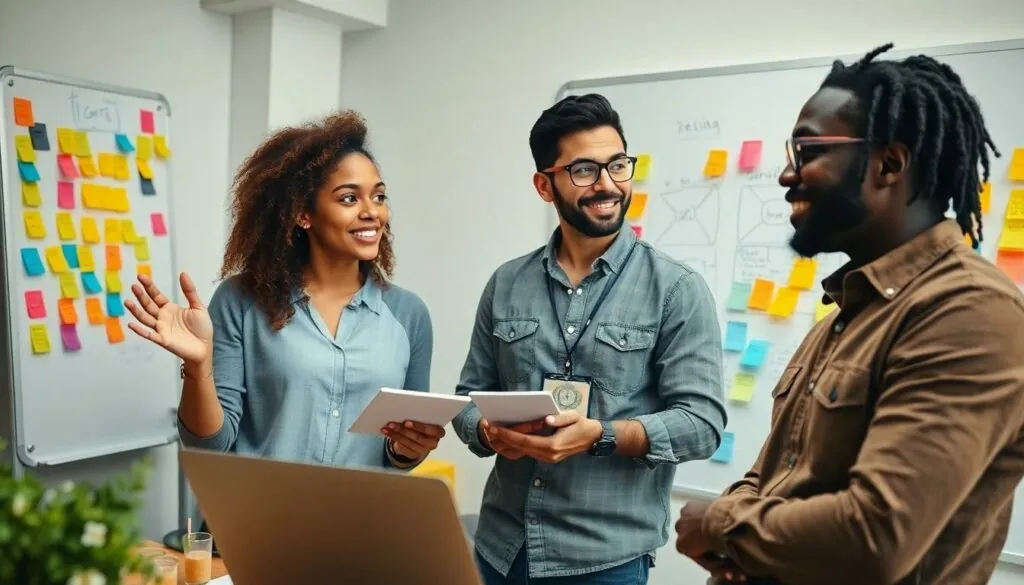In a world where words dance across screens and emojis reign supreme, one burning question lingers: can ChatGPT accept images? Picture this: you’re trying to explain your latest culinary masterpiece, but your words just can’t capture the magic of that perfectly risen soufflé. Wouldn’t it be great if you could just upload a photo and let the AI do the talking?
While ChatGPT has mastered the art of conversation, it’s not quite ready to become a visual artist. But fear not! This article dives into the fascinating realm of image processing and AI capabilities. Get ready to uncover the truth behind ChatGPT’s limitations and explore how this clever chatbot continues to evolve in a world where visuals are king.
Table of Contents
ToggleOverview of ChatGPT
ChatGPT excels in generating text-based responses and engaging in dialogue. Its strengths lie in natural language understanding and context comprehension, which enhance its conversational capabilities. This AI tool currently functions without the ability to accept images, limiting users from sharing visual content in their interactions.
Developers designed ChatGPT for textual input, enabling it to analyze and generate responses solely based on written language. Users often express a desire for image integration in scenarios like culinary showcases or artistic expressions. These needs highlight a gap in functionality, where visual elements could enrich communication.
Alternative AI models exist that focus on image processing, utilizing computer vision techniques to interpret and analyze visual data. Such models complement text-based AIs, offering a more comprehensive approach to communication in a visually driven society.
Ongoing advancements in AI may pave the way for future iterations of ChatGPT to incorporate image processing capabilities. Innovations in machine learning and natural language processing can unite text and visual elements in seamless interactions. The hope remains that future updates will address these limitations, providing users with a more holistic experience.
For now, ChatGPT’s role as an advanced conversational agent continues to thrive, proving its utility in many contexts while awaiting potential expansion into the realm of images.
Image Input Capabilities

ChatGPT operates solely with text-based input, currently lacking the ability to accept or process images. This limitation impacts how users might wish to enhance conversations through visual data.
Current Features
Text generation stands out as ChatGPT’s primary feature. The model excels in understanding natural language, allowing for detailed and contextually relevant text-based responses. Engaging in conversations, it can address a wide array of topics while generating cohesive content. Users appreciate its strengths in creating informative articles, answering questions, and facilitating dialogue, maintaining engagement throughout the entire interaction.
Limitations
The absence of image processing capabilities hinders the versatility of ChatGPT. Users can’t upload photos to supplement discussions, which may restrict certain conversational contexts such as showcasing recipes or artworks. This lack of functionality creates an unmet need for enhanced communication through visuals. While alternative AI models focus on image recognition and analysis, ChatGPT remains dedicated to textual interaction, limiting its overall integrative potential as communication tools evolve.
Use Cases for Image Input
Image input could significantly enhance communication within various contexts. Users may find it beneficial in educational settings and creative platforms.
Educational Applications
Visual aids strengthen learning experiences, allowing students to grasp complex concepts better. Incorporating images fosters engagement during lessons, such as using diagrams in science classes. Educators could utilize images to illustrate historical events, increasing student interest and retention. Assignments that include images can spark discussions, enabling students to analyze visual material critically. While ChatGPT excels in text-based guidance, the absence of image processing limits usability in classrooms. As technology evolves, the demand for AI models capable of handling images in education will likely grow.
Creative Projects
Artists and creators often rely on visuals for inspiration and collaboration. Integrating images into projects can enhance communication among team members, providing a clearer understanding of artistic visions. Sharing mood boards or concept sketches during brainstorming sessions aids in conveying ideas effectively. Writers could use imagery to explore themes, leading to deeper storytelling. Visual feedback on designs offers a path to refine creative work. Despite these possibilities, ChatGPT’s focus remains solely on text, restricting its effectiveness in creative workflows. As user needs evolve, so will the potential for image integration in future AI developments.
User Experience and Feedback
Users often find ChatGPT’s interaction capabilities impressive, yet they express frustration regarding the inability to share images. This limitation can hinder conversations that benefit from visual context, such as discussing artistic endeavors or showcasing culinary creations. They highlight scenarios where image uploads would enhance the overall communication experience.
Feedback also underscores the significance of visuals in educational settings. Learners pointed out that integrating images could make complex subjects clearer and more engaging. Many users feel that the absence of image processing restricts the learning tools available to educators.
Artists and creators frequently note missed opportunities for collaboration. Sharing mood boards or seeking visual feedback could streamline their creative processes. They note that while ChatGPT excels in text-based dialogues, the lack of image support creates barriers that others might easily overcome.
User experiences suggest a growing demand for visual integration within AI systems. While ChatGPT focuses on text, its users envision a future where text and image capabilities coexist harmoniously. Ongoing advancements in AI technology could lead to features that allow for text-image interactions, which many anticipate eagerly.
Despite current limitations, users appreciate ChatGPT’s conversational strengths in various contexts. It effectively generates informative content and engages in meaningful dialogue. Users maintain hope for future enhancements that could bridge the gap between text and visual elements, ultimately leading to a richer communication landscape.
Future Developments
Advancements in AI technology may usher in new capabilities for ChatGPT, potentially including image processing. Integrating images into its framework could enhance user interactions significantly. This improvement could address user requests for a more dynamic communication experience where text and visuals coexist.
Many users express a desire for ChatGPT to accept images as part of conversations. Visual aids could aid comprehension in educational scenarios by illustrating complex ideas more effectively. Shedding light on intricate concepts through images increases engagement levels among learners.
Moreover, artists envision using ChatGPT with image compatibility to facilitate collaboration. Sharing mood boards or providing visual feedback would streamline creative discussions, thereby enriching the creative process. A seamless blend of text and visuals could elevate collaboration to new heights.
Feedback from the user community often emphasizes frustration over the current limitations. Users point out that incorporating images could significantly improve interactions, especially in contexts requiring visual references. Observing how AI models focused on image recognition meet user expectations shows a growing demand for enhanced functionalities.
Increased focus on visual integration within ChatGPT reflects broader trends in communication preferences. Users imagine a future where they can express ideas comprehensively by combining text with visuals. Changes in technology could ultimately lead to ChatGPT evolving into a more versatile tool that caters to these diverse needs.
Continued advancements might transform ChatGPT into a holistic communication platform. It would enhance conversations not just through words but also through imagery. Stakeholders in AI development should consider these possibilities to keep pace with user expectations.
The limitations of ChatGPT in accepting images highlight a significant gap in its functionality. Users seeking to enhance their conversations with visual elements often find themselves restricted to text-only interactions. This constraint can hinder effective communication in various contexts such as education and creative collaboration.
As demand for integrated visual capabilities grows, it’s clear that future advancements in AI may bridge this gap. The potential for ChatGPT to evolve into a tool that combines text and images could revolutionize how users engage with information. By addressing these limitations, ChatGPT could not only enhance user experience but also adapt to the dynamic needs of modern communication.





